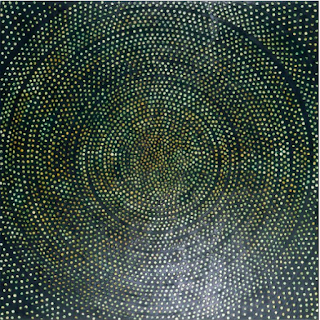
This painting by Ross Bleckner was the most interesting and eye-catching piece of artwork that I show in the museum. At first glance the painting caught my attention and I was immediately drawn to it. As I got closer I was able to see that the painting had a certain texture that was created by the use of oil and wax. This painting was mesmerizing and in a way had a calming feel for me. Also the painting consisted of yellowish-green circles under the dominance of the black, which I took as the light trying to get out of the darkness. I think the composition used in this painting is the golden mean. The next painting that I gravitated towards was Henri Matisse's Festival of Flowers because of the warm colors and details. From afar the painting almost looked sloppy or just like dabs of color, but as I got closer I was able to see the detail Matisse put into it from the flowers, the trees, the two women, the cars and the building in the background. The detail was delicate in a r